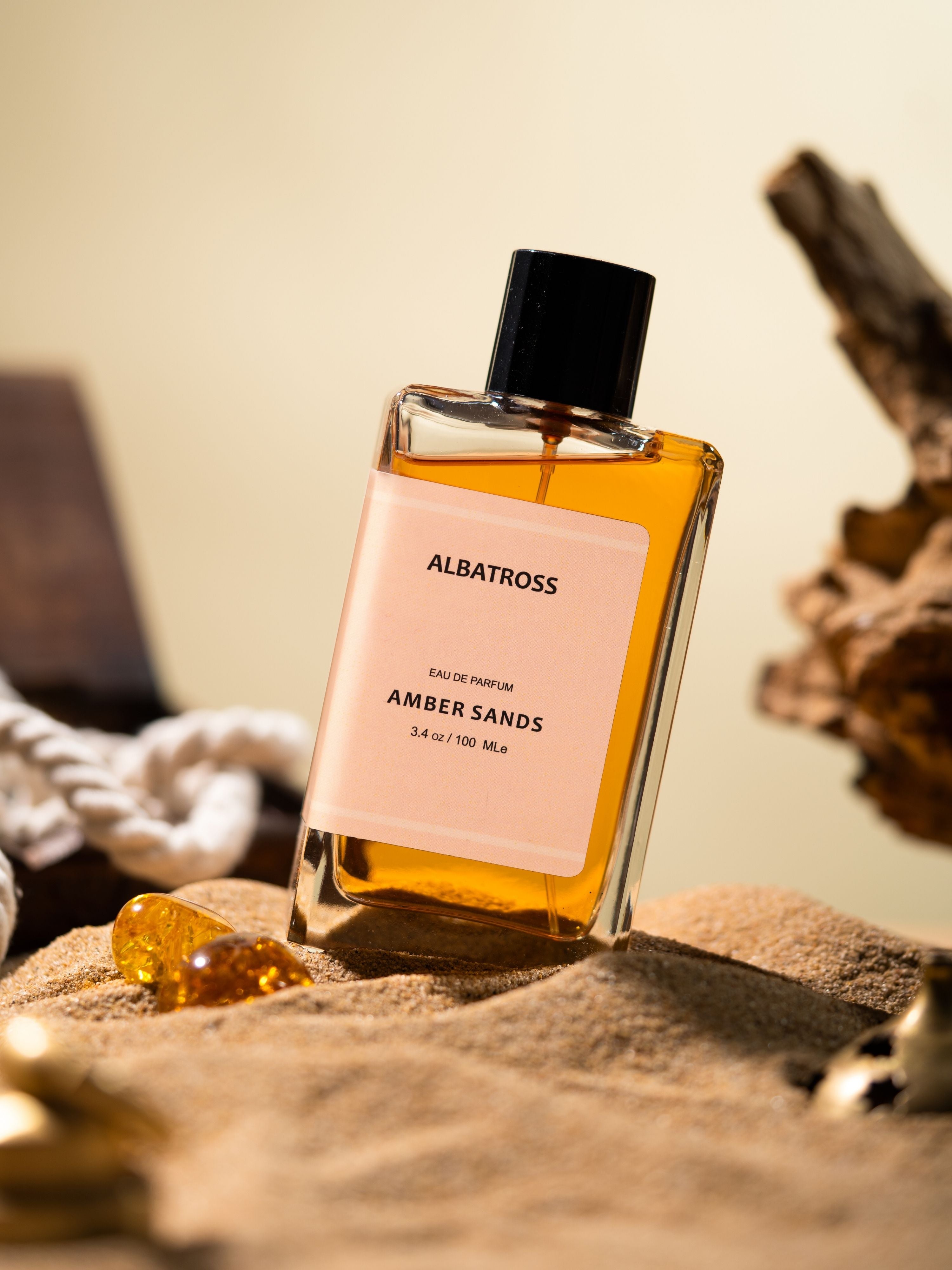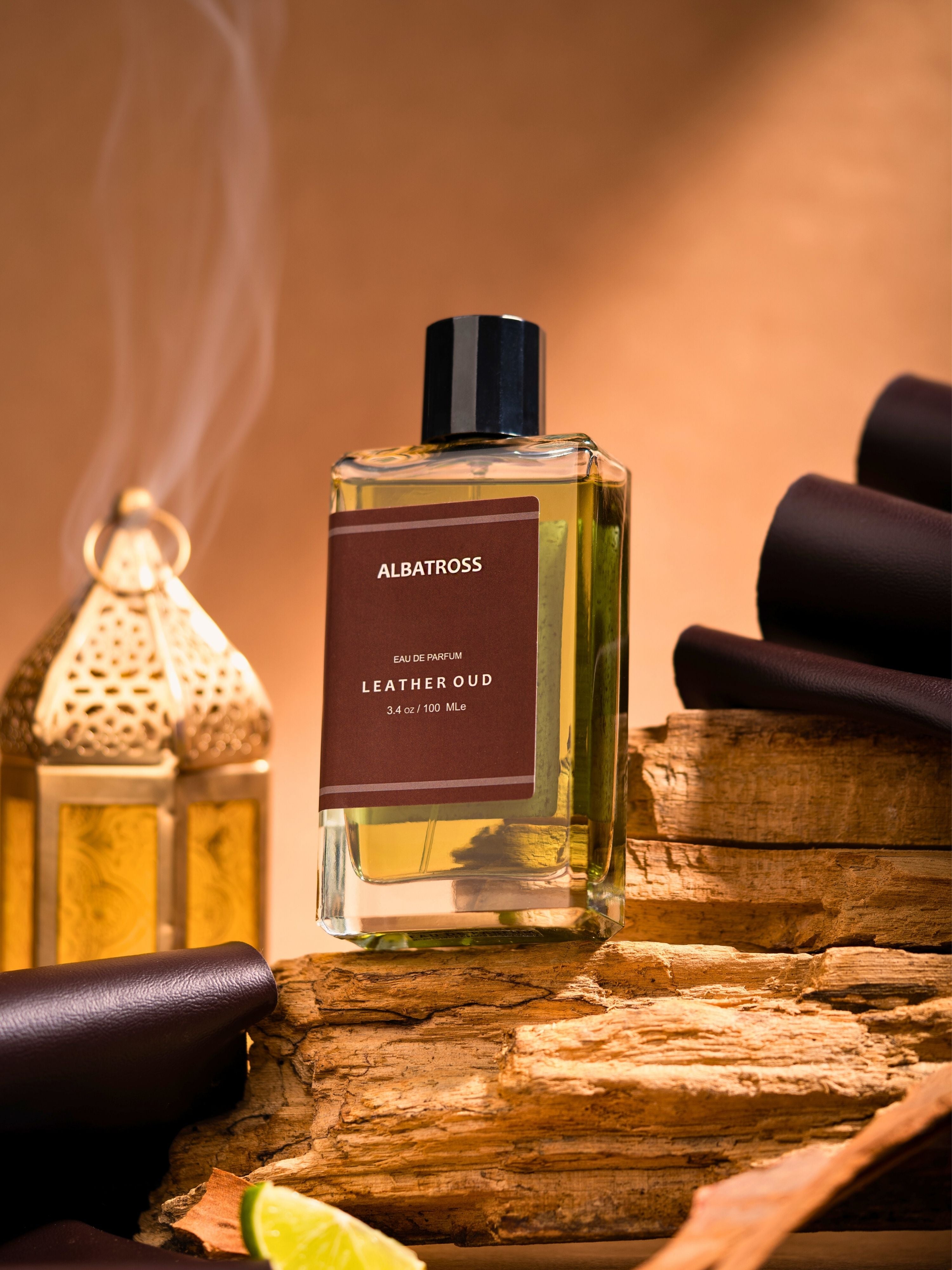Understanding the Pyramid of Perfume Notes: A Fragrance Guide | Albatross perfumes
Have you ever sprayed a new perfume, loved it instantly, but then found its scent transformed hours later? Or perhaps you've been baffled by descriptions like "sparkling citrus top notes" or "creamy sandalwood base"? This phenomenon is no accident; it's the carefully orchestrated magic of the pyramid of perfume notes. Understanding this fundamental concept is crucial for anyone who wants to truly appreciate, choose, and even discuss fragrances with confidence.
I've spent years exploring the nuances of scent, and I can tell you that grasping this structure is like unlocking the secret language of perfumery, transforming a simple smell into a complex story that unfolds on your skin.
What is the Pyramid of Perfume Notes?
The pyramid of perfume notes is a traditional way to describe the different stages of a fragrance's evaporation and how its scent evolves over time. Imagine a triangular structure: the widest part at the top represents the initial, fleeting scents, while the narrow base signifies the lasting, foundational aromas. This hierarchy of notes creates a dynamic and multi-layered olfactory experience.
The Three Tiers of Fragrance Evolution
Every well-crafted perfume is composed of three distinct layers, or "notes," each with its own role and duration:
-
Top Notes (Head Notes): The first impression.
-
Middle Notes (Heart Notes): The core of the fragrance.
-
Base Notes: The lingering foundation.
These notes are carefully blended by perfumers to create a harmonious progression, ensuring that the fragrance tells a complete story from its first spray to its final fade.
Top Notes: The First Impression
The top notes are the lightest and most volatile compounds in a perfume. They are the scents you smell immediately upon spraying the fragrance, making the crucial first impression.
Characteristics of Top Notes
-
Volatility: They evaporate quickly, typically lasting anywhere from 5 to 15 minutes.
-
Purpose: Their primary role is to grab attention, create an initial burst of freshness, and smoothly transition into the heart of the fragrance.
-
Common Scents: Top notes are often fresh, sharp, and uplifting. Think of:
-
Citrus: Lemon, bergamot, orange, grapefruit, lime
-
Herbal: Lavender, peppermint, basil, rosemary
-
Light Florals: Some very light florals or fruity accents can also appear here.
-
It's important not to judge a perfume solely on its top notes. While they are appealing, they are just the opening act, setting the stage for the deeper layers to come. Many people make the mistake of buying a perfume they love at first sniff, only to be disappointed when the initial burst fades.
Middle Notes: The Heart of the Fragrance
As the top notes begin to dissipate, the middle notes (also known as heart notes) emerge. These form the core character and body of the perfume, creating its central identity.
Characteristics of Middle Notes
-
Longevity: Middle notes last longer than top notes, typically lingering for 2 to 4 hours.
-
Purpose: They bridge the gap between the initial freshness of the top notes and the richness of the base notes. The heart notes are often well-rounded and harmonious, defining the fragrance family (e.g., floral, oriental, woody).
-
Common Scents: This is where the perfume truly blossoms. Expect to find:
-
Florals: Rose, jasmine, lily of the valley, ylang-ylang, neroli
-
Green Notes: Galbanum, violet leaf
-
Spicy Notes: Nutmeg, cardamom, cinnamon (lighter spices)
-
Fruity Notes: Apple, peach, berry accords (more prominent here than in top notes)
-
The middle notes are what most people refer to when they describe the "smell" of a perfume. They are the soul of the fragrance, the part that you will experience for the longest duration before the base notes take over.
Base Notes: The Lingering Foundation
The base notes are the heaviest and least volatile compounds in a perfume. They are the longest-lasting part of the fragrance, emerging as the middle notes fade and providing depth, richness, and longevity to the overall composition.
Characteristics of Base Notes
-
Longevity: Base notes can last for 6 hours or even much longer, sometimes for an entire day or more, depending on the concentration of the perfume.
-
Purpose: They create the lasting impression of the fragrance, grounding the lighter notes and often adding a sensual, warm, or creamy dimension. They also act as fixatives, slowing down the evaporation of the lighter notes.
-
Common Scents: Base notes are typically rich, deep, and sometimes sweet or musky. Examples include:
-
Woody Notes: Sandalwood, cedarwood, vetiver, patchouli
-
Resinous/Amber Notes: Amber, frankincense, myrrh
-
Musky Notes: Musk (various types, synthetic and natural)
-
Gourmand Notes: Vanilla, tonka bean, chocolate
-
Animalic Notes: Civet, castoreum (often synthetic in modern perfumery)
-
These are the scents that cling to your skin and clothing, leaving a memorable trail long after the initial spray. It's the base notes that contribute significantly to a perfume's sillage (the scent trail it leaves) and its overall longevity.
How the Pyramid Works in Practice
Think of the pyramid of perfume notes as a symphony. The top notes are the opening flourish, bright and captivating. The middle notes are the main melody, complex and engaging. The base notes are the lingering resonance, the deep, warm chords that provide a satisfying conclusion.
When you apply a perfume, it begins to interact with your skin's chemistry and warmth, causing the notes to evaporate in sequence:
-
Initial Spray: You primarily detect the top notes.
-
After 15-30 minutes: The top notes soften, and the middle notes begin to emerge, blending with the remaining top notes.
-
After 2-4 hours: The middle notes are prominent, and the base notes start to become noticeable, adding depth.
-
After 6+ hours: The base notes dominate, leaving a warm, lasting scent on the skin.
This evolution is why it's always recommended to test a perfume on your skin and wait at least 20-30 minutes before making a purchase, allowing the top notes to fade and the true character of the heart notes to shine through. Even better, wear it for a few hours to experience the full base note development.
For tips on sampling scents effectively, read [our guide to finding your signature fragrance].
The Importance of Note Blending
A skilled perfumer meticulously blends these notes to create a harmonious and intriguing journey. The goal is not just to layer scents but to ensure a seamless transition between them, creating a cohesive and well-balanced fragrance. The balance and interplay between all three tiers define the perfume's character and complexity. Some perfumes might have a very linear progression where the notes don't change much, while others are highly dynamic and evolve dramatically.
To delve deeper into the art of perfumery, explore [our post on the origins of fragrance and ancient techniques].
Conclusion:
Understanding the pyramid of perfume notes is an essential step toward becoming a true fragrance connoisseur. It transforms the act of choosing and wearing perfume from a simple sensory experience into an informed appreciation of olfactory artistry. By recognizing the roles of top, middle, and base notes, you can better anticipate how a scent will evolve on your skin, make more confident purchasing decisions, and speak about fragrances with a new level of insight. So next time you reach for a bottle, take a moment to consider the intricate pyramid within and enjoy the beautiful story it's about to tell.
FAQ Section:
FAQs About the Pyramid of Perfume Notes
-
What is the "pyramid of perfume notes"?
It's a concept describing the three layers of a fragrance (top, middle, and base notes) that evaporate at different rates, causing the scent to evolve over time on your skin. -
How long do top notes last?
Top notes are the most volatile and typically last for about 5 to 15 minutes after application. -
What are middle notes also called?
Middle notes are also commonly referred to as "heart notes" because they form the core and main character of the fragrance. -
Why are base notes important?
Base notes are crucial because they provide depth, richness, and longevity to the perfume, emerging as the final, lingering scent and acting as fixatives for the lighter notes. -
Should I buy a perfume based on the initial smell?
No, it's best to wait at least 20-30 minutes, or even a few hours, after applying a perfume to your skin before buying. This allows the top notes to fade and the middle and base notes to fully develop, revealing the true character of the fragrance.


















